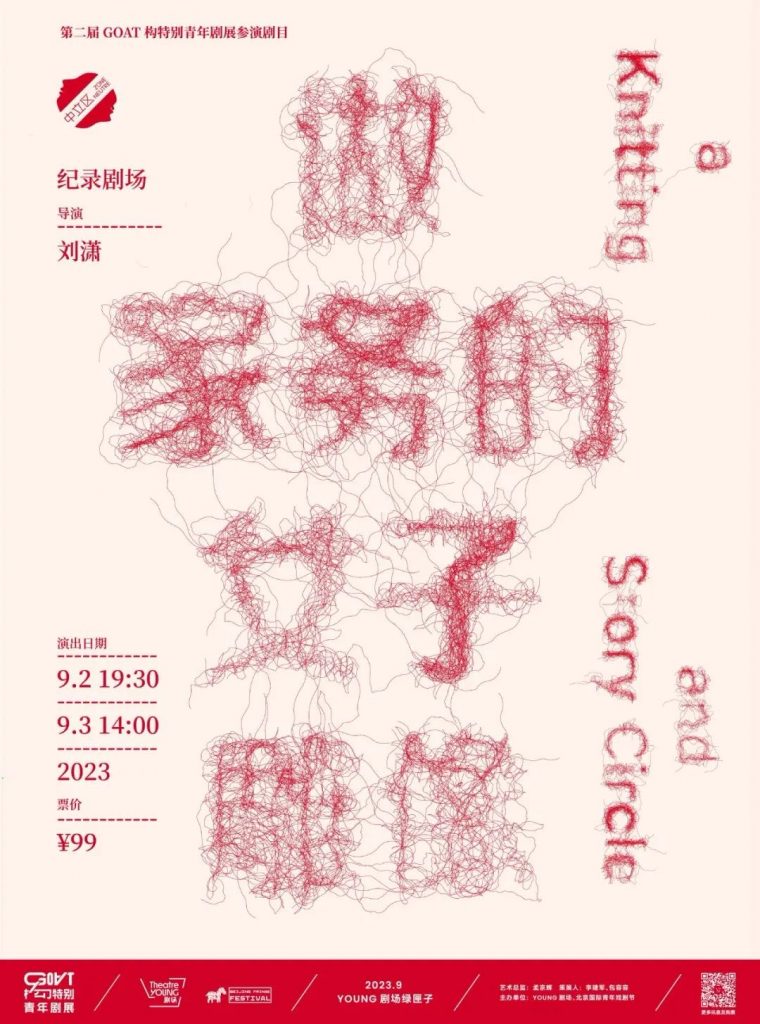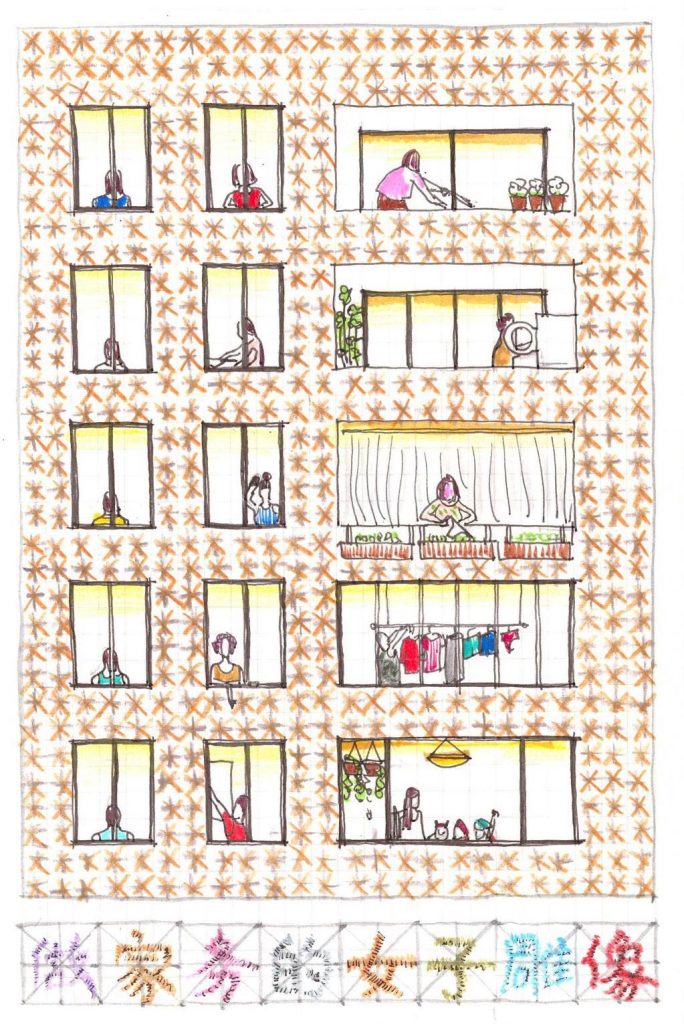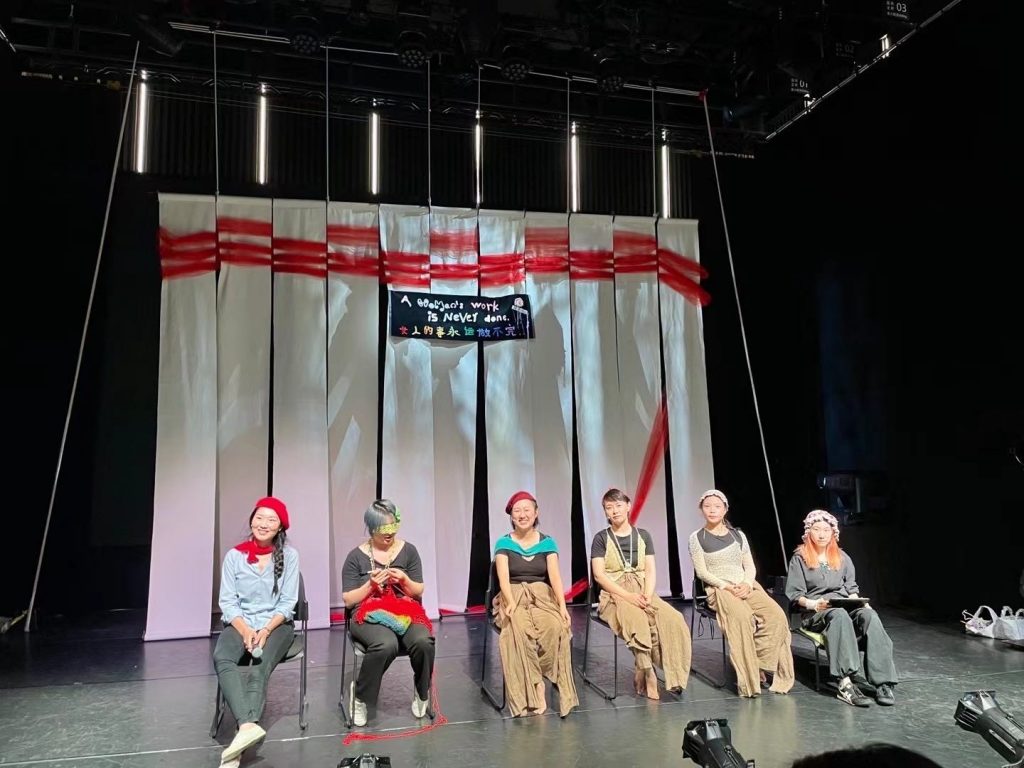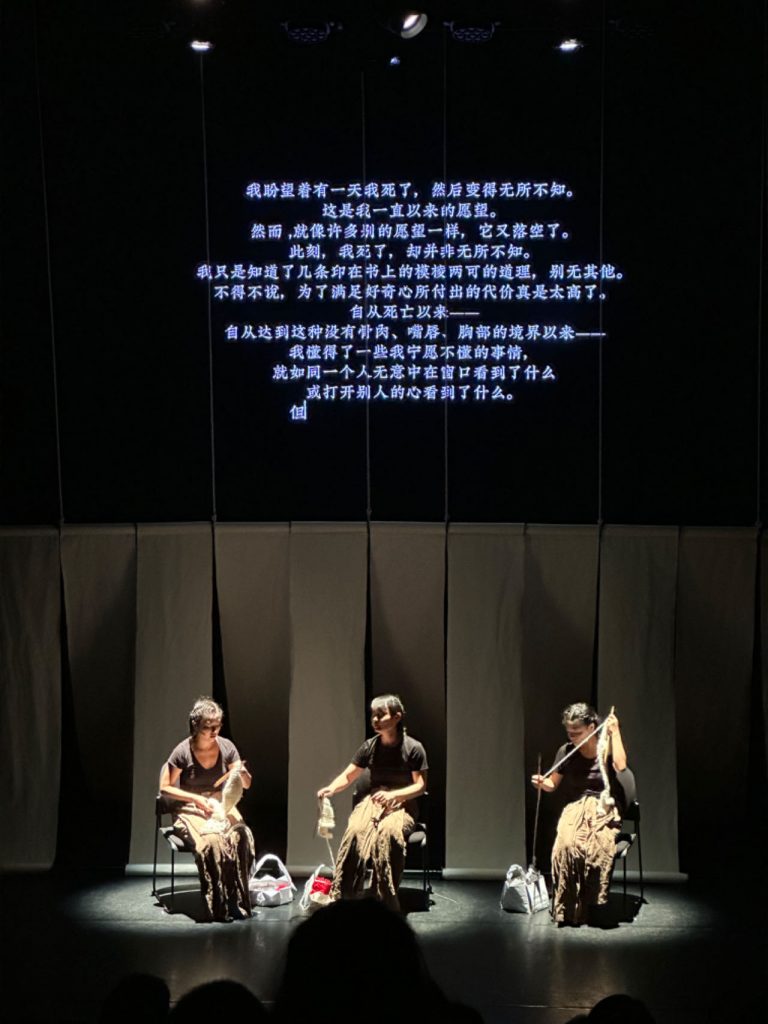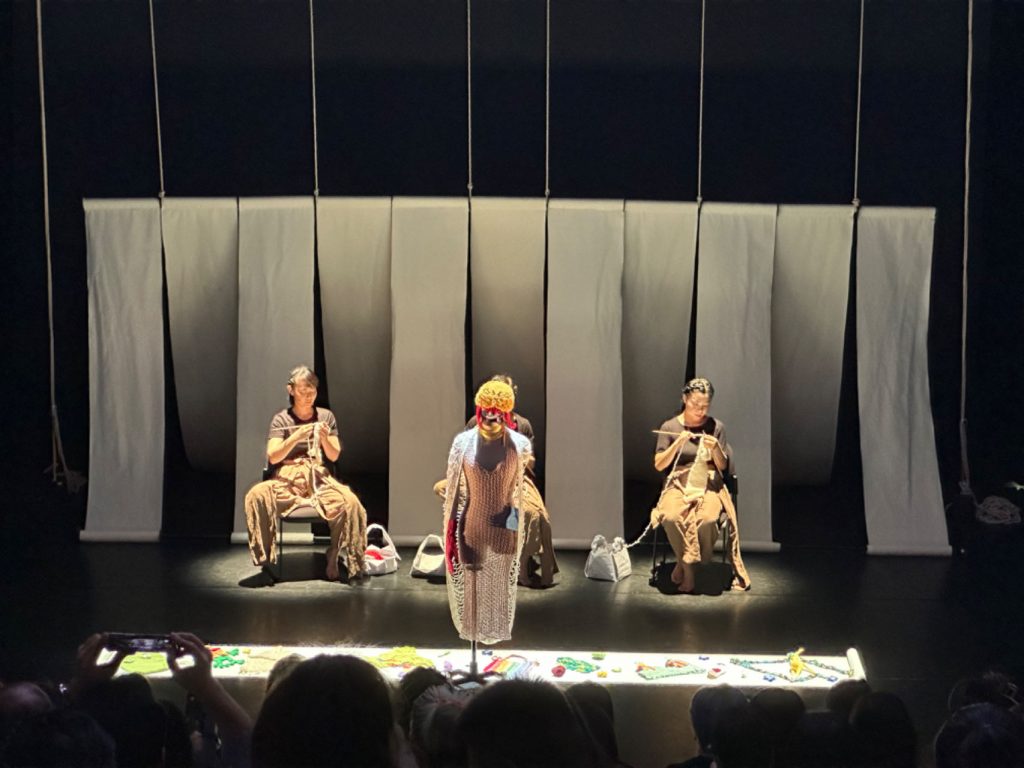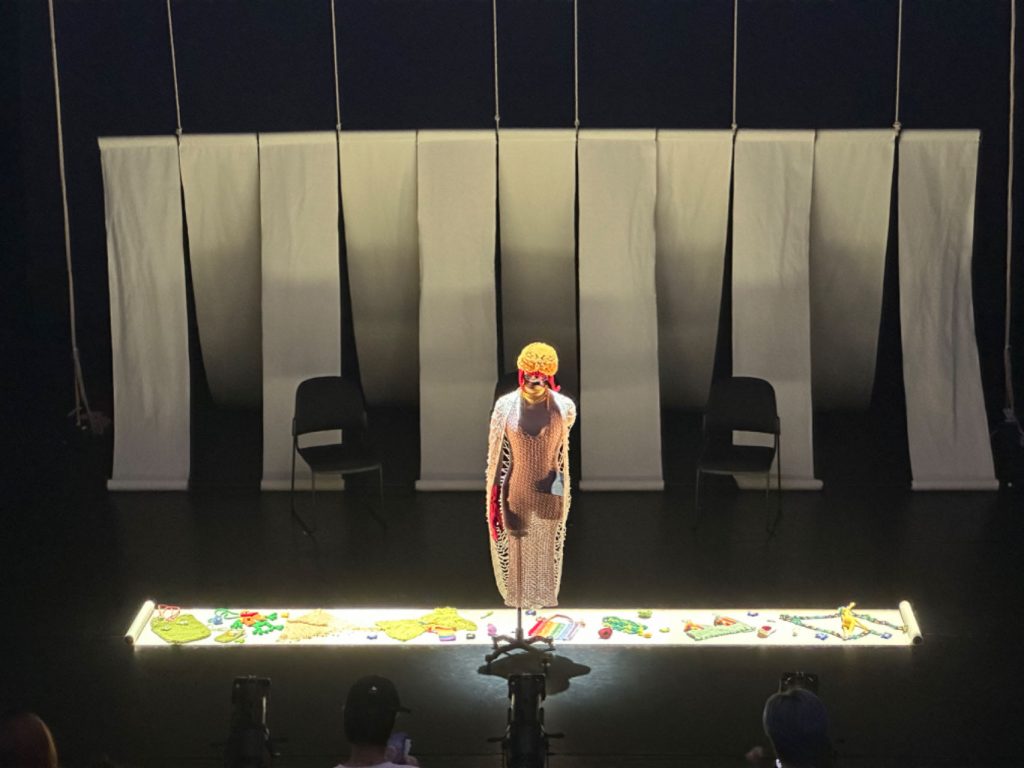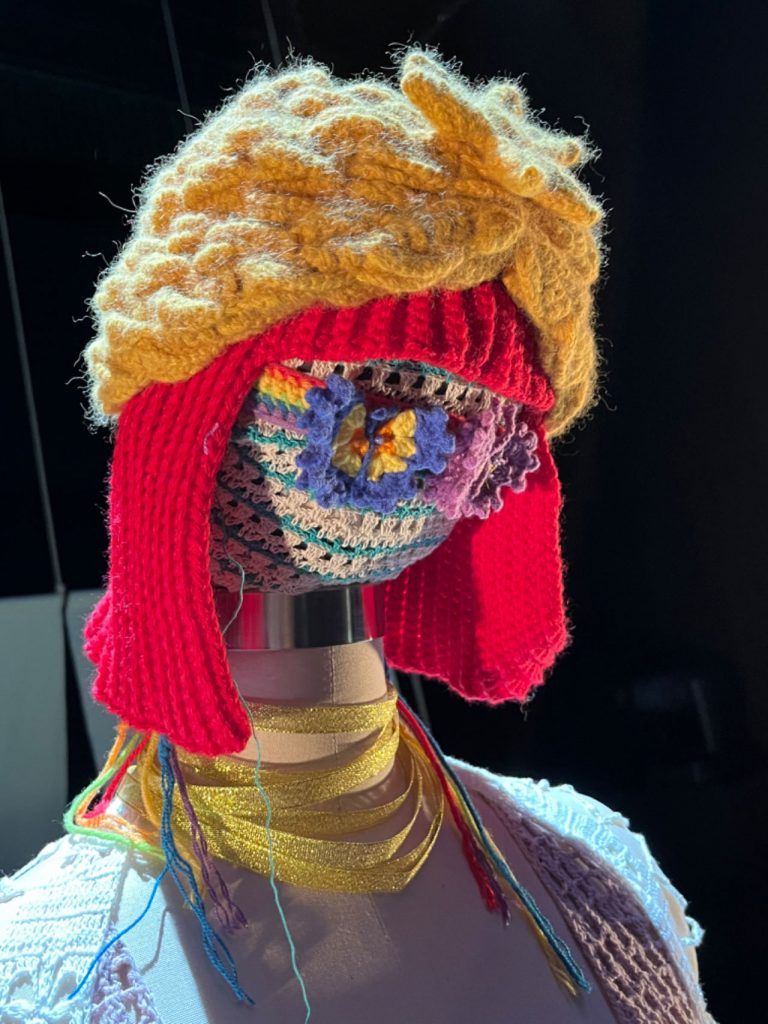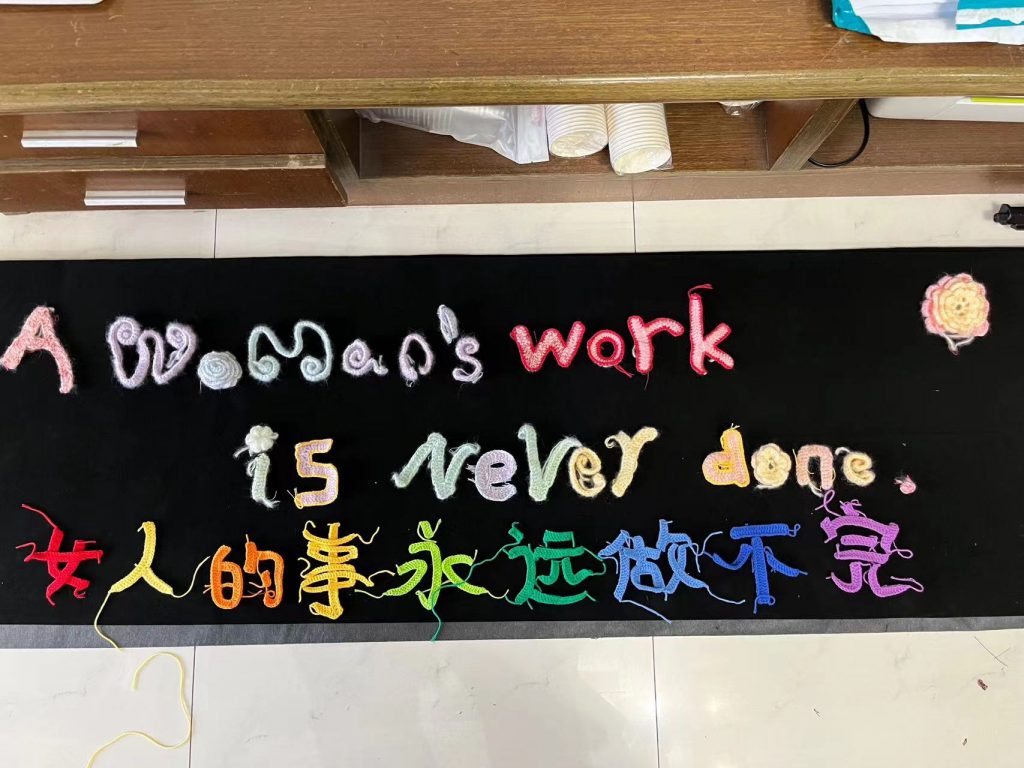Man works from sun to sun, a woman’s work is never done.
| 去年(2022年)某天,我观察到对面楼阿姨几乎24小时都在窗口洗涮清扫,家务事仿佛永远做不完,于是录下了一段视频。然而视频里无法看清阿姨的具体动作,只能看到她仿佛【雕像】般凝滞不动的身影。 雕像是艺术,将阿姨看作一尊雕像似乎也是对于她具体生活的一种简单化和浪漫化,但家庭妇女以及她们的劳动往往会被视作艺术的反面——庸碌的日常。 在特殊时期,每个人都或多或少、被动或主动地和家务劳动产生了更深的连结,这是否会让我们有机会重新审视这些一直被忽略的“女人家的事”呢? 《做家务的女子雕像》以纪录剧场的形式深入探讨家务劳动“剥削”与“快乐”并存的属性,讲述特殊时代背景下我们每个人与家务劳动可能的连结。前期通过工作坊招募非职业演员来收集整理故事素材,表演时将多则神话与传说作为剧作框架,以珀涅罗珀的故事为主线,开头结尾贯以预录的影像。同时,本剧会采用“编织小组”的社交形态,在日常的表演性中提炼戏剧元素和舞台形式,让女性们在一个固定的时间和空间里相聚和碰撞,产生别样的思考与火花。 “Statue of a Woman Doing Housework – A Knitting and Story Circle” is a documentary theatre project that draws inspiration from various sources, including rewritten ancient Greek myths, a real-life observation, and anthropological research on knitting groups. The project aims to explore the significance of domestic work, women’s roles, and the power of communal creativity. The performance incorporates two rewritten Greek myths: Margaret Atwood’s version of Penelope from Homer’s Odyssey and Yennelik’s monologue of Eurydice from the Orpheus and Eurydice story. These myths provide alternative perspectives on female characters and their struggles within patriarchal societies. They challenge traditional narratives and offer new insights into the female experience. Additionally, the project is influenced by an observation of the artist’s female neighbor cross the street who was tirelessly engaging in household chores during the two month lock-down in Shanghai in 2022. This observation raises questions about the nature of domestic work, the connection between women and craftwork/housework, and the overlooked artistic potential within these everyday routines. The anthropological aspect of the project centers around knitting groups, which have historically been a prevalent activity among women. Engaging in knitting fosters a state of mental flow, effortlessly achieved through the repetitive and serene nature of the craft. This state often induces a condition known as “brain fog” for knitters, characterized by a liminal state between consciousness and the subconscious. Exploring this transitional state is a primary focal point of this documentary theatre project The methodology of the performance involves seeking performers who are skilled in housework or needlework and have a personal connection to the topic. Around 30 individuals of all ages will be chosen, with the possibility of approximately 10 being selected for the final stage. The process includes three online meetings in June, followed by rehearsals in Shanghai between July and August, with the performance taking place in September in Shanghai. Except for the knitting circle, the general format of the performance incorporates two mythological text fragments as a basis for narration, accompanied by a blurred image of a woman doing housework in the background. |
